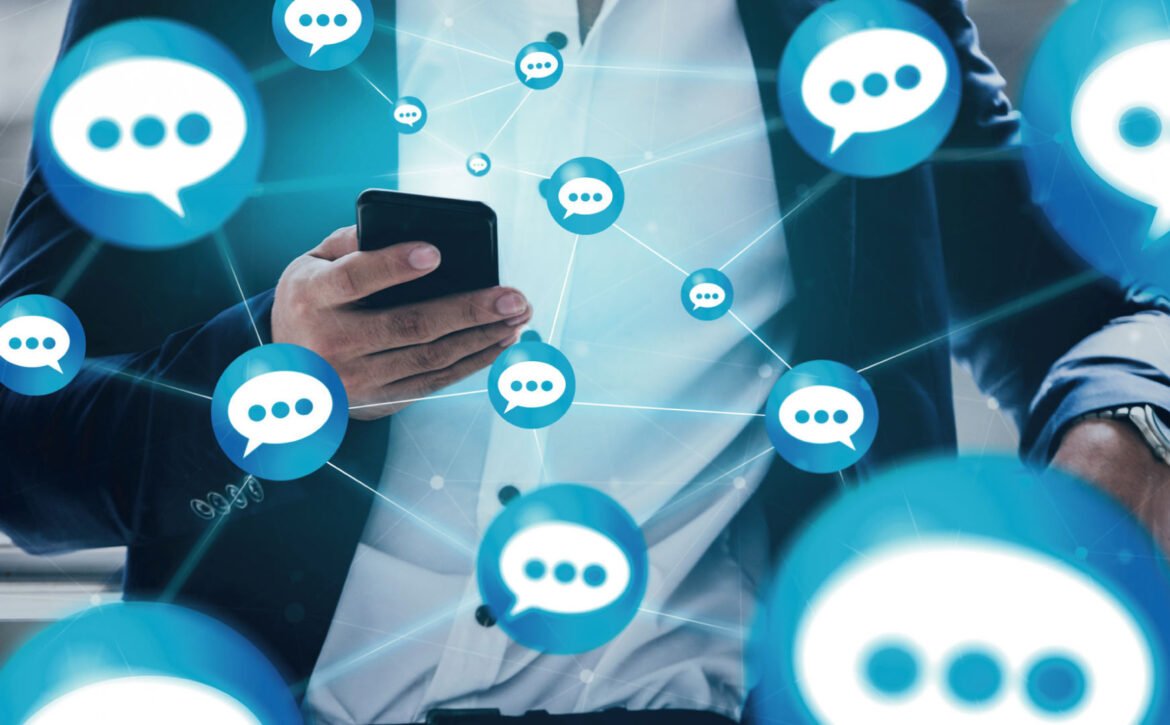Leveraging Multi-Channel Chat for Seamless Holiday Experiences Across Email, Social, and In-App Messaging
Provide seamless holiday support by integrating email, social, and in-app chat. Enhance customer experience and drive engagement across channels!
Table of Contents:
1. Mapping the Multi-Channel Chat Ecosystem: Email, Social, and In-App Messaging
2. Crafting an Integrated B2B Holiday Strategy Across Channels
3. Enhancing B2B Buyer Experience Through Personalization and Automation
3.1 Personalization at Scale
3.2 Using Automation for Efficiency
4. Optimizing Each Channel for Key B2B Engagement Milestones
5. Leveraging Multi-Channel Analytics for Insights and Holiday Season Adjustments
5.1 Metrics to Monitor
5.2 Data-Driven Optimization
6. Building a Scalable, Resilient Support Framework for Holiday Demand Surges
6.1 Strategies for Scalability
6.2 Planning for Redundancy and Resilience
7. Security and Compliance Considerations for Multi-Channel B2B Communications
7.1 Best Practices for Data Security
7.2 Compliance in Multi-Channel Chat
The holiday season is quite challenging but, at the same time, an opportunity. High demands need to be met along with maintaining engagement that should be personal and responsive for maximum conversion. Multichannel chat has been emerged as a strategic tool, ensuring that no lead and customer slips through the cracks. B2B brands would be able to deliver a seamless and consistent experience on email, social media, and in-app messaging which not only delivers the right holiday results but will foster long-term loyalty of the customers.
Here’s how to implement an advanced multi-channel chat strategy across key platforms, with best practices for B2B companies looking to make the most of this holiday season.
1. Mapping the Multi-Channel Chat Ecosystem: Email, Social, and In-App Messaging
However, it’s best to grasp how each type of platform has its specific value and purpose when applied as an entire set. Together with email and in-app messages, social becomes a means to not only control and direct the surge in demands of holidays but also, with an effective combination of both, will create cohesive customer experience across the brand’s services.Each comes at different functions:
- Email: A well-crafted, detailed update; also suitable to deliver customized offers.
- Social Media: It’s the way of delivering speedy, chat-like messages or inquiring on what the brand would do real time.
- In-App Messaging: Direct, responsive and perfect for instant help while driving engagement at the right moment of decision.
Thus, B2B organizations can leverage these channels combined to simplify customer support while enhancing responsiveness and providing specific messages to drive buyers through a purchasing process.
2. Crafting an Integrated B2B Holiday Strategy Across Channels
To provide a unified holiday experience, B2B companies need an integrated approach to ensure that messaging, promotions, and support stay consistent across channels. That makes the customer journey smooth but also increases trust and familiarity.
Consistency is Key
All touch points concerning your brand have to become coherent experiences for customers. Your tones, styles and even branding should remain in one dimension. Whether the news update via email update or through a message appearing in social media or gaining assistance from an application is about the same. And one begins by making a call, discount, seasonal promotions all within the overall channel. Then you customize collective protocols and templates; therefore, the messaging may well become a coherence with a different channel.
Tip: Set up a master content calendar to align timing and ensure all channels are firing on the same cylinders to deliver similar core holiday messages.
3. Enhancing B2B Buyer Experience Through Personalization and Automation
Personalization is the new way to catch and keep B2B buyers, particularly during the holiday season. However, more visitors arrive during the holiday season; so, quality and consistency depend on automation tools as well as AI-driven chatbots.
3.1 Personalization at Scale
Multi-channel chat consumers respond to personalization. It can be as simple as acknowledging previous purchases or providing them with tailored recommendations. Personalized messages can be automated at various stages of the customer journey using data insights and segmented buyers, offering them targeted holiday offers based on previous purchases and browsing behavior.
3.2 Using Automation for Efficiency
Automation can help scale during peak times by being able to address repetitive inquiries like order status, holiday return policies, and FAQs. Chats that are AI-powered and automated workflows help provide fast answers, delivering faster response times and a better customer experience without overwhelming human agents. At the same time, advanced automation systems can send complex queries to human support, so that buyers get a high-touch experience where it matters.
4. Optimizing Each Channel for Key B2B Engagement Milestones
Each chat channel should be optimized to support specific buyer milestones, ensuring no opportunity for engagement or conversion is missed.
- Email: Use email for holiday promotions, new product announcements, onboarding sequences, and post-purchase follow-ups. Automation in email can support drip campaigns, sending tailored offers and reminders to keep your brand top-of-mind during the holidays.
- Social Media: Social platforms provide opportunities for real-time engagement. Monitor mentions, comments, and reviews, and respond promptly. Additionally, you can use social channels for proactive outreach, sharing user-generated content or behind-the-scenes glimpses of your brand’s holiday activities.
- In-App Messaging: In-app chat is highly effective for providing instant, tailored assistance, especially during high-intent moments when buyers are exploring products or services. You can also use it to trigger targeted upsell or cross-sell suggestions based on real-time browsing behavior.
When each channel is optimized for specific engagement milestones, the overall buyer journey becomes smoother and more intuitive, allowing B2B brands to nurture relationships and convert leads faster.
5. Leveraging Multi-Channel Analytics for Insights and Holiday Season Adjustments
Effective multi-channel strategies depend on data-driven decision-making. During the holiday season, analyzing performance across chat channels can reveal opportunities for refinement and optimization.
5.1 Metrics to Monitor
To gauge effectiveness, track metrics like conversion rates, response times, resolution rates, customer satisfaction scores, and channel-specific engagement rates. Pay attention to patterns that may indicate where your strategy needs adjustment, such as spikes in support requests or lower-than-expected engagement on certain platforms.
5.2 Data-Driven Optimization
With real-time insights, B2B companies can fine-tune their multi-channel approach on the fly. If certain messages or offers resonate well in one channel, consider expanding them to others. Also, use analytics to identify high-intent prospects who may benefit from tailored messaging or direct follow-up. By iterating based on performance, you can maximize efficiency and drive better results throughout the holiday season.
6. Building a Scalable, Resilient Support Framework for Holiday Demand Surges
Holiday demand is powerful to break the breaking point with support resources. B2B companies need strong, elastic support frameworks to ensure timely yet not overwhelming agents to allow for the right service level.
6.1 Strategies for Scalability
Chatbots can help this by using basic FAQs and order tracking information so that most of the inquiries can be automated, focusing the human support team more on complicated issues. In addition to this, mechanisms for rapidly directing technical questions to the right colleagues have to be instituted.
6.2 Planning for Redundancy and Resilience
All potential surges in traffic should be managed using backup systems, and there must be load balancing between the channels. Redundancy protocols must be in place to cover various time zones and extended holiday hours. This way, your support team can handle demand spikes without compromising on response times or customer satisfaction.
7. Security and Compliance Considerations for Multi-Channel B2B Communications
With holiday transactions up, there is an increased demand for the privacy and security of data in multi-channel communication, especially in B2B where sensitive information has been involved, thus it goes without saying that protection is not optional.
7.1 Best Practices for Data Security
Data will be secured with encryption from the communication channels through any other platform. It ensures your chat systems adhere to the industry standards as well as the data protection requirements in terms of regulation that applies to private data and this includes GDPR as well as CCPA for information.
7.2 Compliance in Multi-Channel Chat
Communicate data protection measures to buyers to build trust. Review security protocols in email, social, and in-app messaging regularly to ensure compliance with changing regulations and reassure customers that their data is safe.
Building a Lasting B2B Holiday Experience with Multi-Channel Chat
An integrated multi-channel chat strategy is essential for B2B companies that want to provide seamless holiday experiences. Companies can build lasting connections with buyers by aligning email, social, and in-app messaging, leveraging automation, and focusing on data-driven insights. This holiday season, maximize the potential of each channel to not only drive holiday success but to cultivate loyal, long-term relationships with your customers.
Visit Our SalesMarkBlog Section to Uncover the Sales Strategies That Ignite Your Sales Journey!









